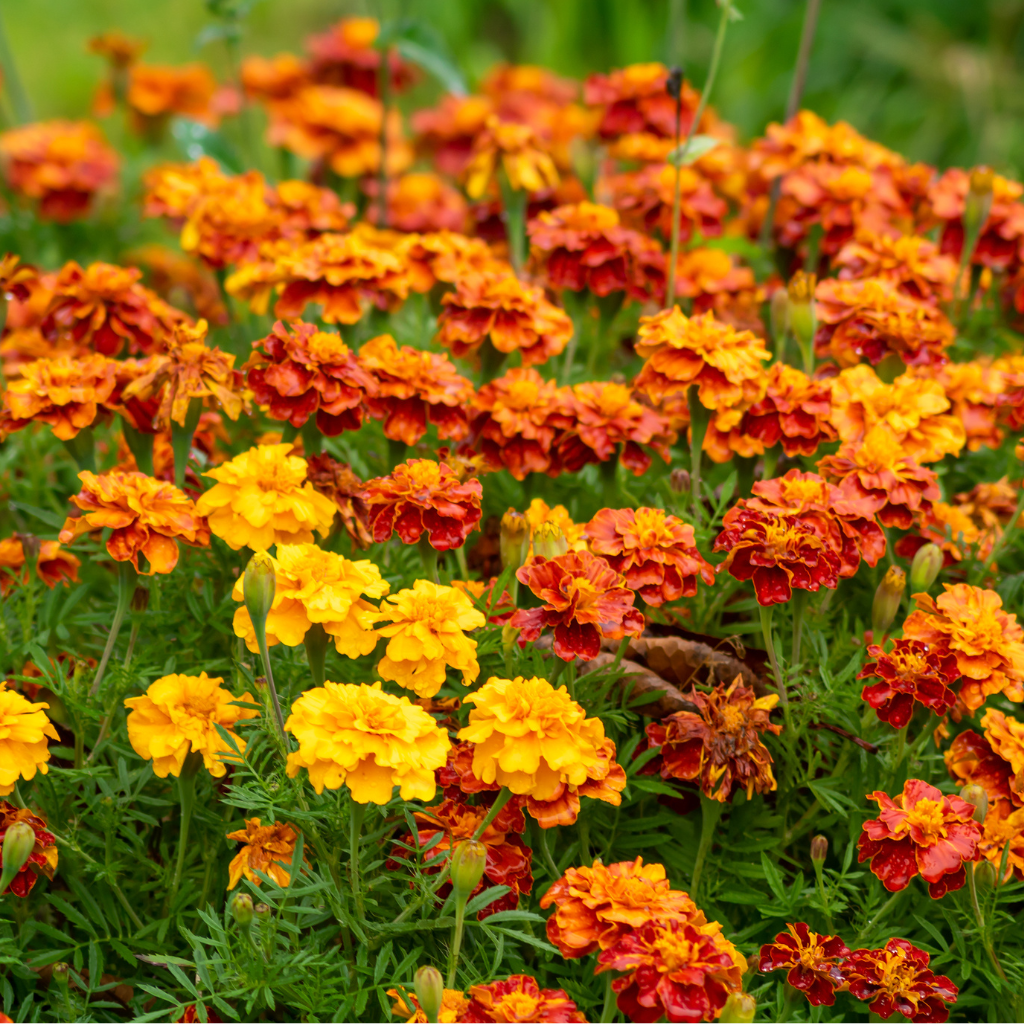
what is eating my marigolds leaves
Share
Marigolds are a popular choice for gardeners due to their vibrant colors and relative ease of care. However, even the hardiest plants can fall victim to garden pests, leading to the common gardener's query: "What is eating my marigolds leaves?" If you've noticed holes or damage to your marigold foliage, it's crucial to identify the culprit to take appropriate action. Here, we'll discuss some common garden pests and provide tips for protecting your marigolds.
Garden Pests Known for Marigold Munching
Slugs and Snails
These slimy creatures are notorious for their love of marigold leaves. They tend to feed at night, leaving behind a trail of mucus and large, irregular holes in the foliage. To confirm their presence, look for silvery slime on the leaves or soil around your plants.
Aphids
Aphids are small, sap-sucking insects that can cause marigold leaves to curl and distort. While they don't typically eat holes in the leaves, their feeding can weaken the plant, making it more susceptible to other problems.
Caterpillars
Caterpillars, the larvae of butterflies and moths, are another common pest that may be feasting on your marigolds. They can cause extensive damage as they chew large holes or even entire leaves.
Earwigs
Earwigs are small insects with pincers on their rear, which can cause alarm. They feed on marigold leaves and flowers, leaving behind ragged edges and holes.
Japanese Beetles
These shiny, metallic-looking beetles can devour marigold leaves, often leaving behind a lace-like skeleton of veins. They are typically active during the daytime and are easy to spot.
Protecting Your Marigolds from Pests
by Warren (https://unsplash.com/@wflwong)
Monitoring and Physical Removal
Regularly inspect your marigolds for signs of pests. Hand-picking slugs, snails, caterpillars, and beetles can be an effective, immediate way to reduce damage. For aphids, a strong blast of water from a hose can knock them off the plants.
Use of Barriers
For slugs and snails, barriers such as copper tape or crushed eggshells can deter them from reaching your plants. Floating row covers can prevent butterflies and moths from laying eggs that turn into hungry caterpillars.
Natural Predators
Encouraging natural predators like ladybugs, lacewings, and birds can help control aphid populations and other pests. Providing habitats such as birdhouses or leaving some areas of your garden a little wild can invite these beneficial creatures.
Insecticidal Soaps and Neem Oil
For a more direct approach, insecticidal soaps and neem oil can be used to control a variety of pests without harming beneficial insects or the environment.
Chemical Pesticides
As a last resort, chemical pesticides can be used, but they should be applied with caution, following the manufacturer's instructions carefully to avoid harming beneficial insects and the surrounding ecosystem.
Conclusion
Identifying what is eating your marigolds is the first step towards addressing the problem. By understanding the common garden pests and implementing strategies for protection and control, you can help ensure that your marigolds remain healthy and vibrant. Remember, a well-cared-for garden is more resilient to pest issues, so regular maintenance and attention are key to keeping those pesky critters at bay.
If you've experienced marigold leaf damage, share your story and how you dealt with the garden pests in the comments below!

